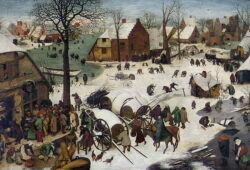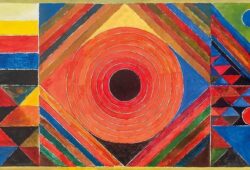Diego Rivera’s Masterpieces: A Glimpse into the Iconic Murals and Paintings
 Posted On
Posted On
Diego Rivera, a towering figure in the world of art, left an indelible mark on the art world with his mesmerizing paintings and monumental murals. Born on December 8, 1886, in Guanajuato, Mexico, Rivera’s artistic journey spanned continents and decades, leaving behind a legacy that continues to inspire and captivate art enthusiasts worldwide. In this article, we will explore the life and work of Diego Rivera, focusing on some of his most iconic paintings and murals.
Rivera’s early life was marked by his passion for art, which led him to study at the Academy of San Carlos in Mexico City and later in Europe. His artistry was deeply influenced by the Mexican Revolution, which ignited his commitment to portraying the social and political issues of his time through his work.
One of Rivera’s most renowned creations is the series of murals at the National Palace in Mexico City. These murals, completed between 1929 and 1935, depict the history of Mexico, from the pre-Columbian era to the Mexican Revolution. Rivera’s ability to blend historical accuracy with artistic expression is evident in these breathtaking murals. His use of vivid colors and larger-than-life figures brought the history of Mexico to life on the palace’s walls, making it accessible to the masses.
Another of Rivera’s masterpiece murals can be found at the Detroit Institute of Arts. “Detroit Industry Murals” was commissioned in the early 1930s and showcases the city’s industrial power. These murals exude a sense of vitality, with dynamic compositions that reflect the energy of Detroit’s manufacturing sector. Rivera’s meticulous attention to detail and his ability to infuse a sense of humanity into machines and workers set these murals apart as a testament to his artistic prowess.
Rivera’s passion for portraying the struggles of the working class and indigenous people is evident in many of his paintings. “The Flower Carrier,” painted in 1935, is a striking example of his dedication to this cause. This painting captures a laborer, burdened by a massive bundle of calla lilies, symbolizing the heavy weight of the working class. Rivera’s use of color and form creates a powerful visual impact, making it one of his most memorable works.
In “Man at the Crossroads,” Rivera took on a monumental project at New York’s Rockefeller Center in 1933. Although the mural was controversial and ultimately destroyed, it remains a symbol of Rivera’s unyielding commitment to his artistic and political principles. The mural depicted a powerful commentary on the social and political issues of the time, which did not align with the Rockefeller family’s vision for the artwork.
Diego Rivera’s artistic journey was not without controversy, but his unwavering dedication to depicting the struggles of the marginalized and oppressed is what makes his work timeless. His legacy lives on through his masterpieces, which continue to inspire artists and provoke meaningful conversations about social justice and human rights.
In conclusion, Diego Rivera’s paintings and murals are not merely works of art; they are windows into the soul of a passionate artist who used his talents to shed light on the pressing issues of his time. His ability to blend history, politics, and artistry in his creations is a testament to his genius. Rivera’s work transcends borders and time, reminding us that art has the power to ignite change and inspire generations to come.



